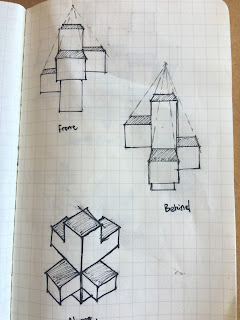Mashup
The use of timber as a structural material in
tall buildings is an area of emerging interest for its variety of potential
benefits, such as reduced
costs and improved construction timescales, increased fire resistance, and
significant reduction in the overall weight of buildings. Taking advantage of the structural capabilities of timber, Tzannes’ design
features a colonnade of y-shaped members, giving the building a dynamic
presence from the street and providing shade and cover for the pedestrian
“Merchant’s Walk.” Behind the colonnade, the seven-story building is made up of
two components: a two-story base housing retail that responds to surrounding
pathways, and a simple glass envelope above that allows the building’s unique
structural frame to be displayed from both the inside and outside. The transition to timber construction may have a wider
positive impact on urban environments and built form, and offers opportunities
not only to rethink the aesthetics of buildings, but also the structural
methodologies informing their design as well. The computational synthesis of biological principles and the complex
reciprocities between material, form and robotic fabrication can lead to
innovative timber construction methods. This
multidisciplinary research approach does not only lead to performative and
material efficient lightweight structure, it also explores novel spatial
qualities and expands the tectonic possibilities of wood architecture.
While,noting the renewable and ecological character of timber-framed structures, innovations in timber construction could lead to entirely new
experiences of the city in the 21st century.
Reference:
Jessica Maris.“Robotically fabricated pavilion by University of
Stuttgart students is based on sea-urchin shells”, Dezeen Magazine(05
May,2016)http://www.dezeen.com/2016/05/05/robotically-fabricated-pavilion-university-of-stuttgart-students-plywood-icd-itke/
Patrick Lynch. “Tzannes Releases Designs for Australia’s Largest Commercial Timber Building”,ArchDaily(24 June,2016)
http://www.archdaily.com/790203/tzannes-releases-designs-for-australias-largest-commercial-timber-building
Stuart Robert. “Timber skyscrapers could transform London’s
skyline”,University of CAMBRIDGE(08
April,2016)
Sketch
36 Textures
Chosen Textures
The Plan and the Section
The Bridge
bridge 1
bridge 2
The division of The Space
1. The place marked in pink arrange d in the large part ( two part combine the building), those usually needed more area with large flow of student. The place marked in blue,usually need place more quit comparatively.
2. In both of the two part ,while the level increase, arranging the places need more privacy or more quit environment.
The Images
The view from above
he Stairs (from above view)
Elevation 1
Elevation 2
Elevation 3
The Workshop
The Library with students' learning seat
The public rest area

The Art Gallary
The Lecture Theater




























